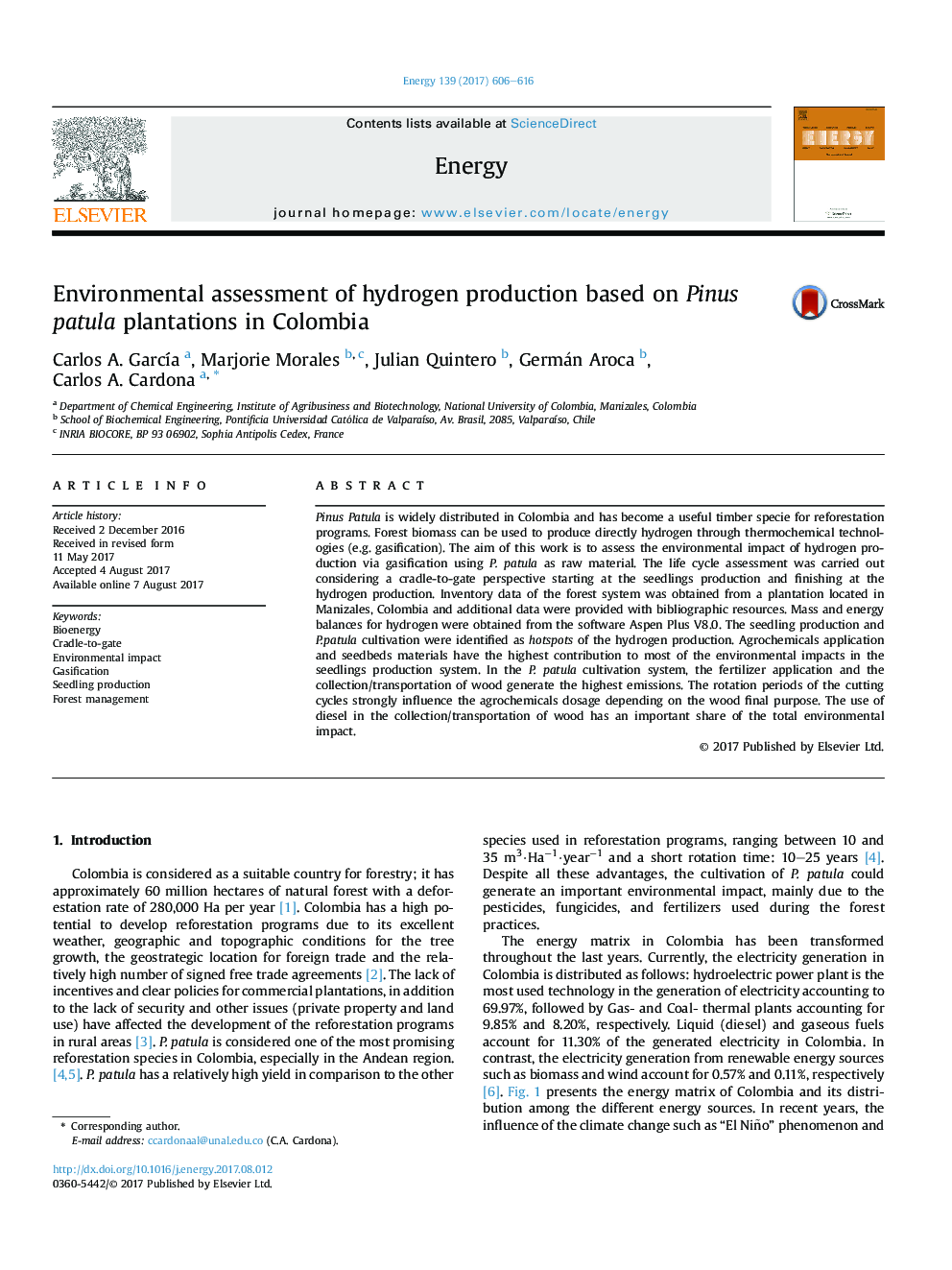| Article ID | Journal | Published Year | Pages | File Type |
|---|---|---|---|---|
| 5475624 | Energy | 2017 | 11 Pages |
Abstract
Pinus Patula is widely distributed in Colombia and has become a useful timber specie for reforestation programs. Forest biomass can be used to produce directly hydrogen through thermochemical technologies (e.g. gasification). The aim of this work is to assess the environmental impact of hydrogen production via gasification using P. patula as raw material. The life cycle assessment was carried out considering a cradle-to-gate perspective starting at the seedlings production and finishing at the hydrogen production. Inventory data of the forest system was obtained from a plantation located in Manizales, Colombia and additional data were provided with bibliographic resources. Mass and energy balances for hydrogen were obtained from the software Aspen Plus V8.0. The seedling production and P.patula cultivation were identified as hotspots of the hydrogen production. Agrochemicals application and seedbeds materials have the highest contribution to most of the environmental impacts in the seedlings production system. In the P. patula cultivation system, the fertilizer application and the collection/transportation of wood generate the highest emissions. The rotation periods of the cutting cycles strongly influence the agrochemicals dosage depending on the wood final purpose. The use of diesel in the collection/transportation of wood has an important share of the total environmental impact.
Keywords
Related Topics
Physical Sciences and Engineering
Energy
Energy (General)
Authors
Carlos A. GarcÃa, Marjorie Morales, Julian Quintero, Germán Aroca, Carlos A. Cardona,
